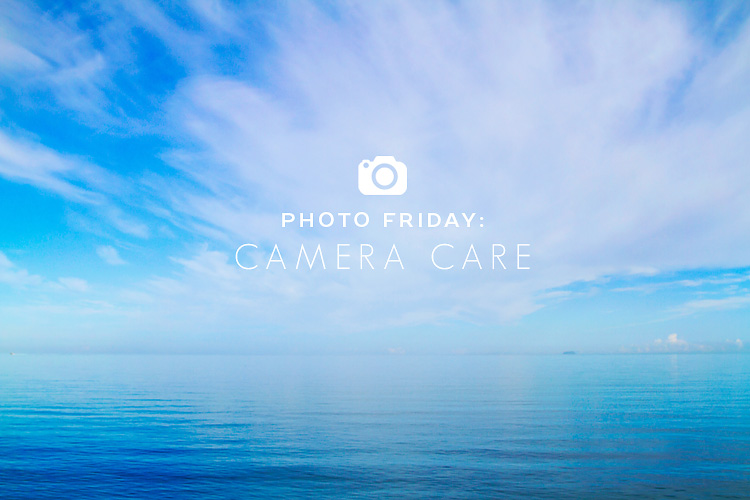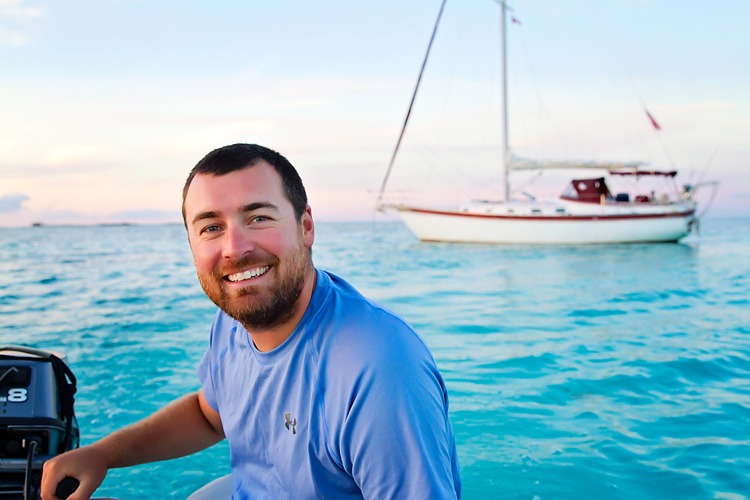Having lots of expensive camera gear while being constantly surrounded by massive bodies of water and gritty sand beaches can be quite the cause for concern. But heck, that never stopped me as a professional photographer (when I had lots of beach photo sessions in Naples where I would literally be covered in wet sand from head to toe by the end of the day) so why should it stop me now?
I can only think of one or two actual scares I’ve had on the trip so far (like the time I called my sister freaking out from Staniel Cay in the Exumas because my camera would only turn on, but wouldn’t do anything else — turns out it was actually overheated from a long hot dinghy ride in the dry bag and eventually fixed itself once it cooled down), but regardless I am always (Jer too) overly cautious with my gear so we don’t risk ruining any of it.
And speaking of caring for my camera gear, it sounded like some of you really wanted to know what precautions I take to keep it all protected while moving from the boat to land; as well as, how I keep my camera clean and corrosion-free.

^^I literally made Jereme pull over the other day as we were driving to Rincon to go horse backing riding so I could snap a quick photo of this amazing view.^^
Safe Storage + Transport
Dry bags, dry bags, dry bags. That is my mantra when it comes to transporting any of my expensive gear from the sailboat, via dinghy, to shore. And I still get minor heart palpitations every time I pass the dry bag over the edge of the boat to Jereme waiting in the dinghy. So far, we haven’t had any accidents. And I’d like to keep it that way.

^^our usual mode of transportation to and from the boat. it’s always open air and often very very wet. which is why I rely on dry bags.^^
We started this trip with three functioning dry bags. About a month or less into the trip, one broke. A week or two after that, we noticed a hole in another. And holes in dry bags kinda defeat the purpose, wouldn’t you say? ;)) So for the past three months, we have been religiously using our third dry bag as our primary transportation device for moving anything of value from boat to shore. I will typically use my regular Epiphanie camera bag as my main equipment carrier, and then just put the entire camera bag into the dry bag while we dinghy to shore.
I’m also kinda lame and stick my camera/lens in a huge ziploc bag, and place that inside my camera bag, and then again inside the dry bag. Not that I think the ziploc is going to act as a total barrier to water or anything, but it does help keep bag-dust away.
Now that we’ve been in Puerto Rico for a few weeks, we recently ordered a new backup dry bag/back-pack that is a little easier to tote around than the one we had been using. And this awesome and much more rugged camera backpack is on my wish list at the moment. :))
As for regular boat storage, I keep my big camera and the smaller G12 in separate ziploc bags inside my regular camera bag. I keep my primary 24-70mm f/2.8L lens attached to the 7D body with the lens cap always on. I keep the camera bag in an airy part of the main cabin where there is minimal moisture build-up. I keep my other lenses in their respective cases/bags and also tucked inside my camera bag.
Camera Cleaning
There are tons and tons of camera cleaning tutorials out there on the web. And lots of photographers use different methods to clean their cameras. If you are looking for some super-detailed info with lots of different specialized brushes and blowers you can purchase, just google camera cleaning. I however, am not going to lie and act like I follow all those crazy steps every time I need to clean my camera. In reality, here’s what I do on the regular to keep my camera/lenses clean:
- When (and I undoubtedly always do) get a few grains of sand on my lens or my camera hood, I first always try to carefully blow them away from the lens with a quick puff of air. Whatever you do, do not try and buff the front of the lens until you have removed any grit or sand, otherwise you might end up scratching that expensive glass!!!
- After I am sure there are not any particles on the lens glass, I always use a soft (micro fiber type) cloth to carefully wipe the lens free of any smudges or fingerprints.
- When necessary, I use a q-tip to clean the viewfinder or to remove other smudges.
- I wipe down the entire camera body as needed to keep it free from salt spray or dirt.
And that’s really it. Pretty simple, right?

^^when you are toting the big camera around to snap photos like this, you are bound to pick up a few grains of sand.^^
Corrosion Combat
Now the dreaded “corrosion” factor for us liveaboards is another issue entirely. Living on a boat, while awesome in its own right, is not so awesome for lots of our “stuff.” The humidity, salty air, and basically perma-wetness that exists on the boat, is not really the most ideal condition for expensive metal gadgets and gizmos. We’ve already lost a few zippers (i.e they cease up) from corrosion. Which is why I have been a little worried that some of my important camera components might corrode from just being kept on a boat all the time.
Luckily, by keeping my “big” camera constantly clean (wiping it off regularly) while also using it pretty much every single day, I have been able to keep it corrosion-free! I really think some of the “use it or lose it” mentality comes into play here. It’s like my camera doesn’t even have the chance to get corroded because I use it too often.
My waterproof GoPro on the other hand has had much more exposure to salt water and way less regular cleanings, and it is just beginning to show a few signs of corrosion on the housing buttons.

^^the GoPro is constantly getting submerged in saltwater which is probably why we are seeing some very minor corrosion popping up. but it is oh so worth it when you are meeting cute little beach piglets like this.^^
I am trying to combat that minor corrosion by more regularly rinsing the entire GoPro (while in its housing) with fresh water and towel drying it off before stowing it away on the boat. I also don’t use the GoPro nearly as much as the big camera, so that might be part of my problem too. And come to think of it, my GoPro is the only piece of equipment that I do not keep in a ziploc bag. Could my ziploc habit actually be helping prevent corrosion? Hmmmm… ;))
There you have it! …How I clean and transport my camera without ruining it. Yet, that is. :))
What other photo questions do you have??? Be sure to send them my way!
Happy Friday!
*I’ve started a regular “PHOTO FRIDAY” series on the blog. You can find all of my photography series posts here.
>>Thanks for visiting LAHOWIND sailing blog! We’d love for you to get to know us and follow our story as we attempt to navigate a whole new world of sailing, as we cruise the Caribbean. …Learn more about us and our sailing + cruising adventures.




Hi,here’s another camera, purse or backpack insert that I love since it adds much needed protection. It’s made by Darby Mack, she has a website on Etsy..
https://www.etsy.com/listing/180271885/camera-bag-dslr-blue-water-resistant?ref=listing-0
Great post. I have been an avid amateur photographer for years. I am on the dark side, I shoot with a Nikon 🙂
Here’s a couple of things I do to keep my camera (and other electronic stuff)safe on the boat:
– When stowing a lens I seal it in a in a Ziploc plastic bag with desiccants. If I am going to store something for a longer period, I will seal it in a vacuum food storage bag.
– I remove batteries from everything. If I am not planning on using the expensive camera anytime soon, the batteries are taken out. I lost some expensive equipment to battery corrosion and kicked myself hard because this is 100% preventable.
– I keep a cheaper point-and-shoot handy for those impulse candid shots while the Nikon is safely stowed.
– You didn’t mention this but I assume you are using clear glass filters to protect your lenses.
– If I need to change lenses on a beach, I stand with my back to the wind.
– When traveling with my camera back pack, everything inside the backpack is in Ziploc bags. This is is case of getting caught off guard by a rain storm. Ask me why I now do this 🙂
Here’s a quick link to one of my favorite beach photos. It took 2 memory cards, a 300mm lens and 6 bags of popcorn: http://www.creampuff.us/wp-content/uploads/2014/03/Animal-Shots-Sea-Gull.jpg
Hope you didn’t get too wet in tropical storm Bertha.
Best wishes,
Mark
Mark and Cindy
s/v Cream Puff
http://www.creampuff.us